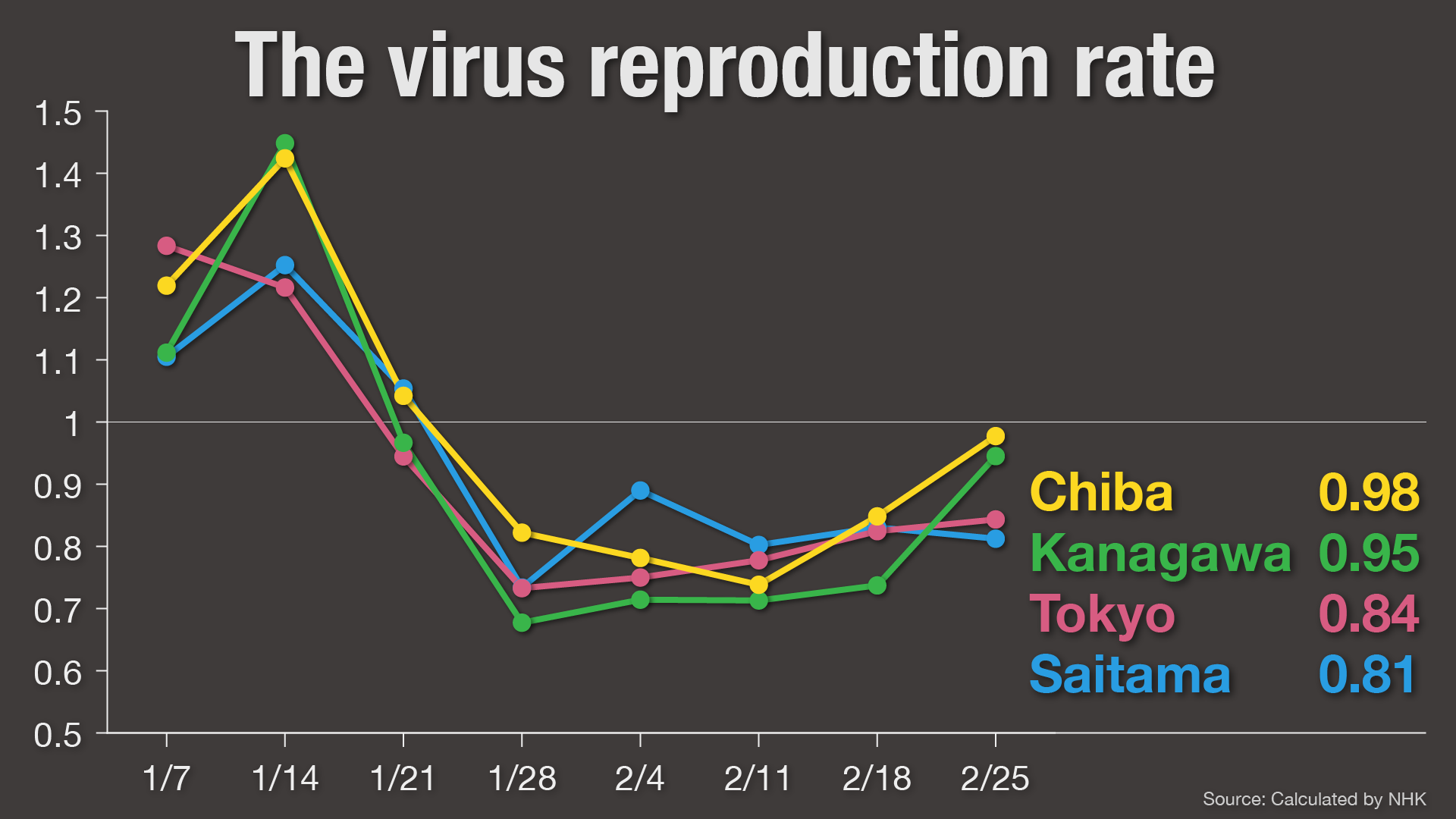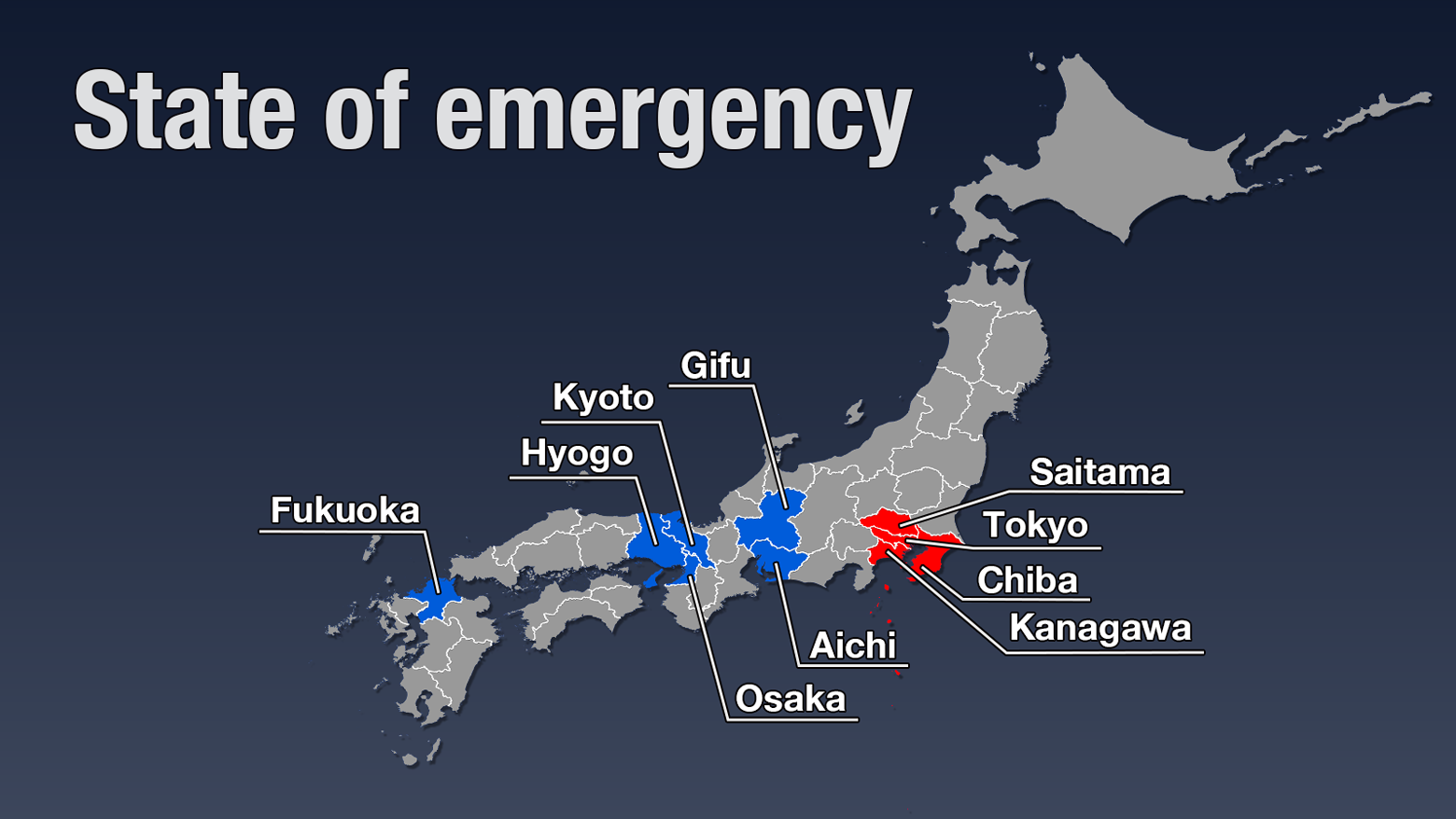The Japanese government declared the emergency last month. Officials asked people to refrain from non-essential outings, and asked restaurants and bars to shorten their hours.
The governors of Osaka, Hyogo, Kyoto, Aichi and Fukuoka have asked the central government to end the declaration earlier than planned. They say the number of coronavirus cases and the occupancy rate of hospital beds for seriously ill patients are generally declining.
On Friday, the minister in charge of the coronavirus response, Nishimura Yasutoshi, said, "It's very important to strike a balance between supporting economic activities and suppressing the virus. We'll relax the restrictions in phases in order to avoid a new wave of infections."
Nishimura added that even after the declaration is lifted, measures to prevent the spread of infections should remain. "In areas where the emergency is lifted, we want to monitor entertainment districts and other places for any signs of a resurgence," he said.
Members of the government's advisory panel addressed concerns that relaxing the restrictions could trigger a rebound in the numbers. On Thursday, they published a list of recommendations, including keeping the number of people who dine together under four, and refraining from eating and drinking when viewing cherry blossoms. They also want restaurants and bars to take extra precautions regarding ventilation, and to keep the volume of music low so that people don't have to raise their voices.
Cases declining but pace slowing down
NHK has calculated the estimated virus reproduction rate, known as the "R" value, in cooperation with the National Institute of Infectious Disease. It refers to the average number of people that one infected person will spread the virus to. When the figure is above one, an outbreak is in place. When it is below one, the outbreak is being contained.
The R numbers in the Greater Tokyo Area have remained below one since the state of emergency took place in early January, but they began rising in February. The number in Tokyo as of February 25 was 0.84, in Chiba was 0.98, Kanagawa 0.95 and Saitama 0.81.

The head of Japan's medical association said on Thursday that the government decision to lift some emergency declarations could send the wrong message that it is safe to resume normal activities.
"It is most important to keep cases low enough to prevent a fourth wave of infections, and to pave the way for the end of the pandemic," said Japan Medical Association President Nakagawa Toshio. "I cannot say I fully support this early lifting of the state of emergency."
Nakagawa also warned that it would be difficult to conduct vaccinations broadly if a fourth wave hits and the virus spreads again. He said that would cause a chaotic situation at medical institutions.
Vaccine program rolling out
The nation's vaccination plan started on February 17, prioritizing medical workers. In the first week, more than 17,800 people got their shots. The Health Ministry says three people reported possible side effects. All three are considered mild cases.
The minister in charge of the country's inoculation program, Kono Taro, announced this week that the government is ready to start the second phase of vaccinations on April 12. This phase would include elderly people.
"Only a limited number of vaccines will be available at first." Kono said in a news conference, noting that about 36 million people will be eligible. "I want people to understand that not everyone will be able to receive the vaccination at the start of that phase."

